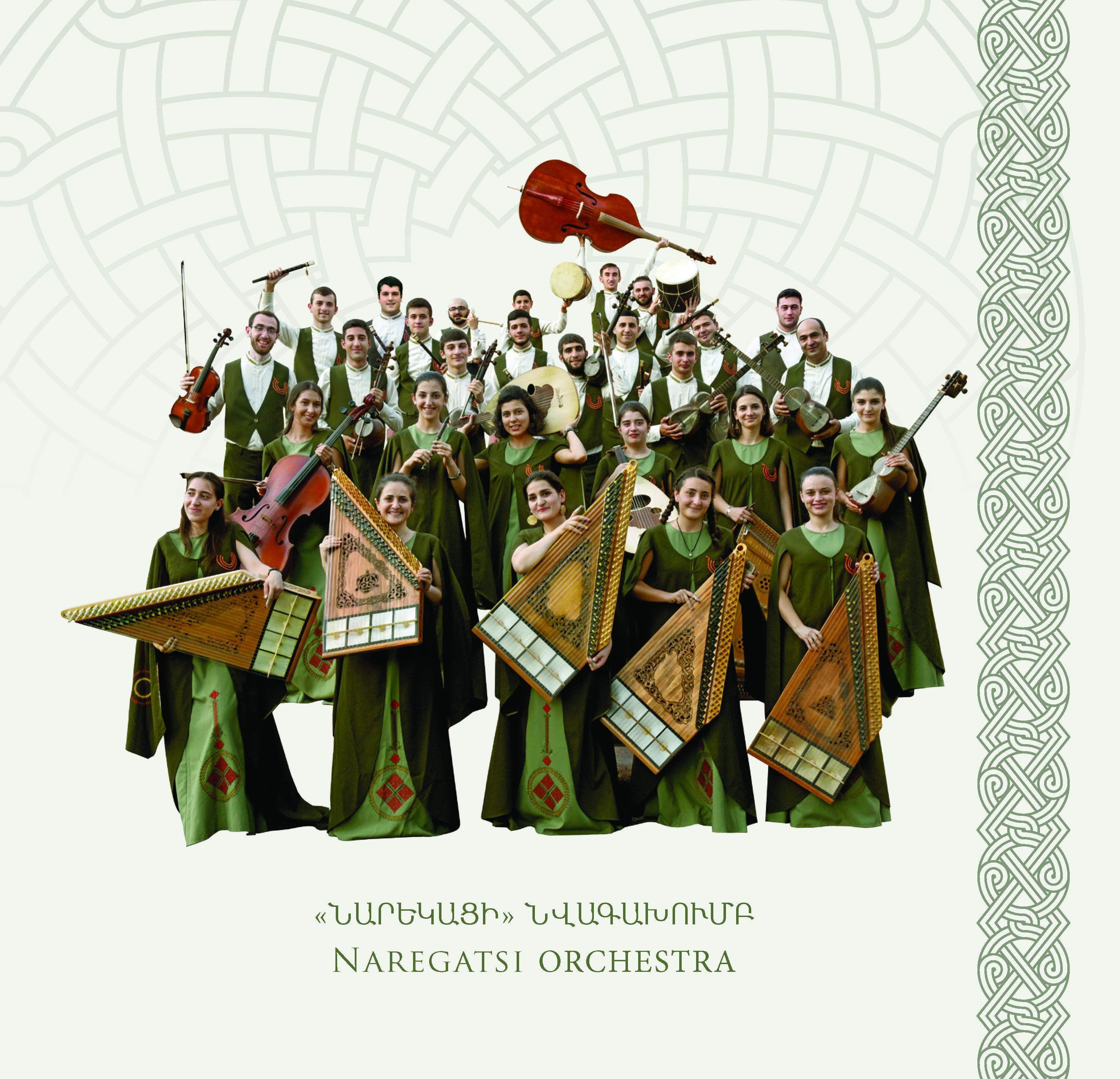Music

1. Kalosi Prken Dance Suite “Kalosi prken’’ literally means a “wheel with an edge.” This popular wedding song, originating in the region of Shirak, marked the procession of guests who walked beside the bride and groom’s carriage that would take the bride away from her paternal home. Integrating the recording of the eminent duduk player Vache Hovsepyan with the melody of the folk song “Ghashang e Mayli Tghen,” the dance suite renders a distinctive sound all its own.
2. Aram Khachaturian Adagio (from “Spartacus” Ballet) Overcoming the technical challenges of adapting classical compositions for folk instruments has been a labor of love for the orchestra, as demonstrated in this masterful arrangement.
3. Eduard Baghdasaryan Suite The score from the well-known film “Tjvjik” reveals the bright tonality of Western Armenia. The new arrangement accentuates the nuances at play that express emotional color.
4. Tsovinar Hovhannisyan Rhapsody N1 Initially, this three-part rhapsody was written for two qanuns and oud. With the new instrumentation for orchestra, the folk elements are expressed all the more vibrantly.
5. Yves Montand Under Paris Skies While the folk genre seems incompatible with popular songs such as this modern French classic, this work proves otherwise, thanks to the orchestra’s genius for adapting modern sounds to ancient instruments.
6. Rouben Vardanyan Dudukis Arranged by R. Vardanyan, the transfixing powers of the ancient duduk, whose mystical sound has captivated the world, is given hero status against the backdrop of this unique orchestration.
7. Artem Khachatur Jrapi The composer has dedicated this work to his father’s birthplace, Jrapi village, founded after the Genocide by Armenians from Kars and located along the Akhuryan River, bordering Western Armenia. In fact, the remains of a bridge leading to the capital of Ani are preserved in Jrapi. Hence, the dance melody of “Jrapi” references the concept of “sea to sea Armenia.”
8. Sayat-Nova Eshkhemed The charm and splendor of the poems of the great 18th century troubadour or “ashugh” are brought to life in this instrumental performance, which presents the ashugh spirit in a new light.
9. Aram Khachaturian Mountaineers’ and Young Mountaineers’ Dances Folk instruments successfully reproduce the rocky sound appropriate to the powerful energy of the dance in this moving episode of the famed ballet suite.
10. Komitas Loru Goutanerg Dedicated to the hardworking peasant who ploughs the fields, the four-part choral version of this song is so versatile and the combinations so figurative and spatial, that it has been characterized as a “sound picture” in the words of Komitas himself.
11. New Uzundara This arrangement adds the elegant dance of the Artsakh bride with the fiery movements of the groom to complete the story of the scene - hence the name “New Uzundara.”
12. Makar Yekmalyan Sourp-Sourp (Holy, Holy) Taken from the Armenian Church’s divine liturgy, this work creates the mystical atmosphere of incense-permeated churches, deepened with the plucking of selected instruments to create the effect of church bells.
2. Aram Khachaturian Adagio (from “Spartacus” Ballet) Overcoming the technical challenges of adapting classical compositions for folk instruments has been a labor of love for the orchestra, as demonstrated in this masterful arrangement.
3. Eduard Baghdasaryan Suite The score from the well-known film “Tjvjik” reveals the bright tonality of Western Armenia. The new arrangement accentuates the nuances at play that express emotional color.
4. Tsovinar Hovhannisyan Rhapsody N1 Initially, this three-part rhapsody was written for two qanuns and oud. With the new instrumentation for orchestra, the folk elements are expressed all the more vibrantly.
5. Yves Montand Under Paris Skies While the folk genre seems incompatible with popular songs such as this modern French classic, this work proves otherwise, thanks to the orchestra’s genius for adapting modern sounds to ancient instruments.
6. Rouben Vardanyan Dudukis Arranged by R. Vardanyan, the transfixing powers of the ancient duduk, whose mystical sound has captivated the world, is given hero status against the backdrop of this unique orchestration.
7. Artem Khachatur Jrapi The composer has dedicated this work to his father’s birthplace, Jrapi village, founded after the Genocide by Armenians from Kars and located along the Akhuryan River, bordering Western Armenia. In fact, the remains of a bridge leading to the capital of Ani are preserved in Jrapi. Hence, the dance melody of “Jrapi” references the concept of “sea to sea Armenia.”
8. Sayat-Nova Eshkhemed The charm and splendor of the poems of the great 18th century troubadour or “ashugh” are brought to life in this instrumental performance, which presents the ashugh spirit in a new light.
9. Aram Khachaturian Mountaineers’ and Young Mountaineers’ Dances Folk instruments successfully reproduce the rocky sound appropriate to the powerful energy of the dance in this moving episode of the famed ballet suite.
10. Komitas Loru Goutanerg Dedicated to the hardworking peasant who ploughs the fields, the four-part choral version of this song is so versatile and the combinations so figurative and spatial, that it has been characterized as a “sound picture” in the words of Komitas himself.
11. New Uzundara This arrangement adds the elegant dance of the Artsakh bride with the fiery movements of the groom to complete the story of the scene - hence the name “New Uzundara.”
12. Makar Yekmalyan Sourp-Sourp (Holy, Holy) Taken from the Armenian Church’s divine liturgy, this work creates the mystical atmosphere of incense-permeated churches, deepened with the plucking of selected instruments to create the effect of church bells.
NEW BREATH NAREGATSI ORCHESTRA
The Naregatsi Folk Instruments Orchestra, a division of The Naregatsi Art Institute (NAI), bears the name of Saint Gregory of Narek whose spiritual legacy has defined the ethos of NAI since its inception.
Directed by talented tar player and composer Artem Khachatur, the orchestra offers a rich and varied repertoire including folk, ballads, spiritual music, new arrangements of classical Armenian compositions and modern popular songs. All 12 works featured on “New Breath” are arranged, transcribed and orchestrated by Artem Khachatur.